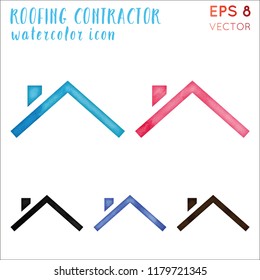Distinguishing Between Exterior And Interior Paint: Major Differences And Their Uses
Distinguishing Between Exterior And Interior Paint: Major Differences And Their Uses
Blog Article
Content By-Reimer copyright
When you're choosing in between exterior and interior paint, it's necessary to understand their essential distinctions that impact both performance and aesthetics. Inside paints are crafted for lower VOC levels and smoother finishes, making them excellent for interior areas, while outside paints are developed to sustain harsh weather conditions and UV direct exposure. hop over to this site serves an unique purpose, but recognizing when to use one over the various other can significantly affect your task's end result. So, what variables should you think about when making your option?
Make-up and Formula
When choosing between exterior and interior paint, understanding their structure and formula is important. Inside paints usually contain a reduced quantity of volatile organic compounds (VOCs), making them much safer for indoor air high quality. You'll discover they frequently have a smoother surface, which enhances their capacity to resist spots and allows for less complicated cleansing. They're designed to withstand the rigors of indoor atmospheres, consisting of differing humidity degrees and temperature level variations.
On the other hand, outside paints are created to sustain harsher conditions. They typically contain higher levels of pigments and additives to withstand fading from UV rays, in addition to to stop mildew and mold and mildew development. Their make-up includes extra binders and resins, which give better bond to surface areas exposed to the aspects. This makes sure the paint can endure rain, snow, and varying temperature levels without peeling or fracturing.
Efficiency and Toughness
Examining performance and resilience is vital when selecting between exterior and interior paint. Inside paint is developed for surfaces that experience much less deterioration. It generally stands up to fading and scuffing, making it suitable for living areas and rooms. However, it may not stand up well in high-moisture areas like kitchens and bathrooms without proper solution.
On the other hand, outside paint encounters harsher problems. It's crafted to withstand UV rays, rainfall, and temperature level variations. This kind of paint often includes ingredients that stop mold and mildew development, guaranteeing long life in numerous environments. When you make use of external paint, you can expect it to last numerous years longer than interior paint, offered it's applied appropriately.
One more vital distinction hinges on the finish choices. Inside paints usually have a range of finishes for aesthetic appeal, while exterior paints prioritize longevity over shine. If you're seeking something that can take care of the components, outside paint is your best bet.
In contrast, if you're focused on interior aesthetic appeals with much less worry for severe conditions, interior paint could be ideal. Inevitably, your selection ought to straighten with the particular demands of the setting.
Visual Considerations
A fresh coat of paint can transform a space, yet aesthetic factors to consider play an essential function in your selection in between interior and exterior options. When you're picking paint, think about the mood you wish to produce. Inside paint allows you to explore a larger range of shades and surfaces, enabling you to reveal your personal style and improve your home's setting. Whether local house painters select soft pastels or bold hues, the appropriate indoor paint can make your rooms feel comfortable, dynamic, or serene.
On the other hand, outside paint requires to align with your home's architecture and the surrounding atmosphere. Here, you're not just making a style statement; you're additionally taking into consideration aesthetic appeal. Selecting straight line construction that balance with your neighborhood can improve your home's value and visual allure. Bear in mind that outside paint is likewise subject to fading and climate adjustments, so selecting an ageless shade can save you from frequent repainting.
Inevitably, think about just how each alternative fits your vision. By aligning your paint option with your preferred visual, you can develop areas that reflect your character while maintaining functionality.
Final thought
When it pertains to picking paint, understanding the vital distinctions between interior and exterior options is important. Interior paints focus on aesthetic appeals and reduced VOCs, making them excellent for enhancing your indoor spaces. On the other hand, outside paints are developed for durability and weather resistance, securing your home from the elements. By considering your specific requirements and the atmosphere, you can with confidence pick the right paint to achieve the look and durability you prefer for your room.
